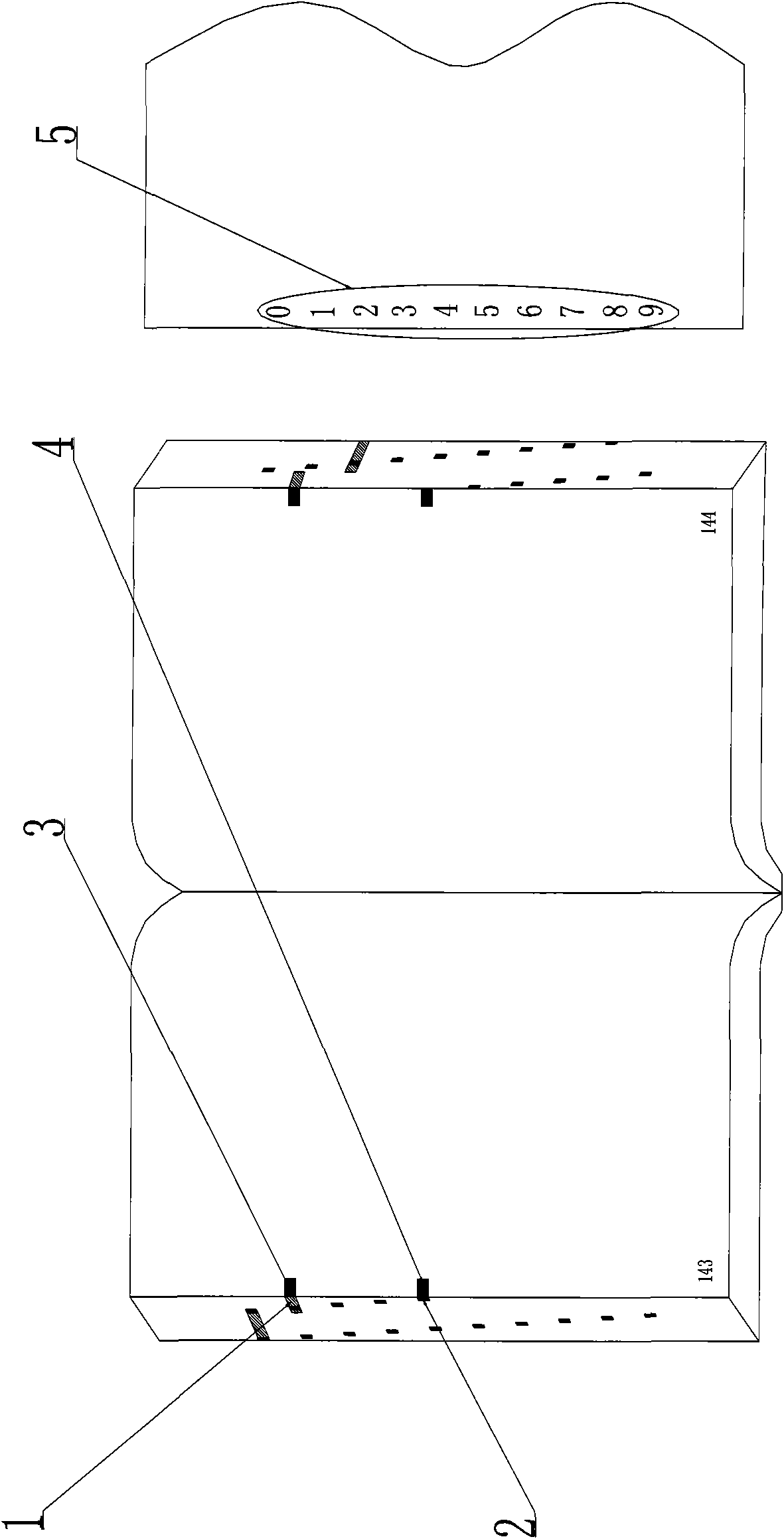Book arranging method with fore-edge indexes
A technology for book openings and books, which is applied to the field of book opening and indexing of books, newspapers and periodicals, and can solve the problems of short code indexing and memorization habit for readers to see at a glance, little meaning for quick search, and few text for quick search.
- Summary
- Abstract
- Description
- Claims
- Application Information
AI Technical Summary
Problems solved by technology
Method used
Image
Examples
Embodiment Construction
[0013] Invention embodiment 1, with reference to figure 1 , figure 2 . figure 1 It is the expanded picture of the inner page and the schematic diagram of the outer side of the bottom page. figure 2 It is a schematic diagram of the front page, the outside of the bottom page and the table of contents page. The first-level index (1) is composed of multiple pages of the first-level index box (3) at the edge of the inner page, and the second-level index (2) is formed by the second-level index box at the edge of the inner page (4) Multiple pages are superimposed. The first-level index is arranged vertically and uniformly in a stepwise manner to form the first-level sequence index, and one first-level index indicates a sequence item and its inner page in the first-level sequence; the second-level index is arranged vertically and stepwise to form the second index In the first-level sequence index, a second-level index indicates a sequence item in the second-level sequence and it...
PUM
 Login to View More
Login to View More Abstract
Description
Claims
Application Information
 Login to View More
Login to View More - R&D
- Intellectual Property
- Life Sciences
- Materials
- Tech Scout
- Unparalleled Data Quality
- Higher Quality Content
- 60% Fewer Hallucinations
Browse by: Latest US Patents, China's latest patents, Technical Efficacy Thesaurus, Application Domain, Technology Topic, Popular Technical Reports.
© 2025 PatSnap. All rights reserved.Legal|Privacy policy|Modern Slavery Act Transparency Statement|Sitemap|About US| Contact US: help@patsnap.com



